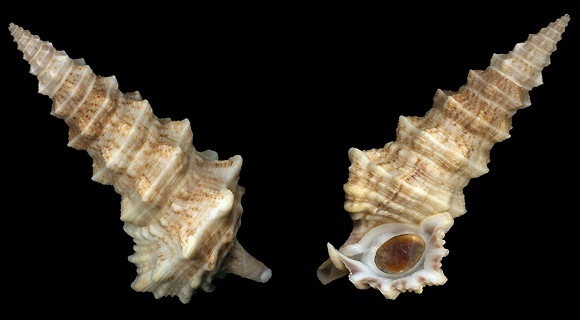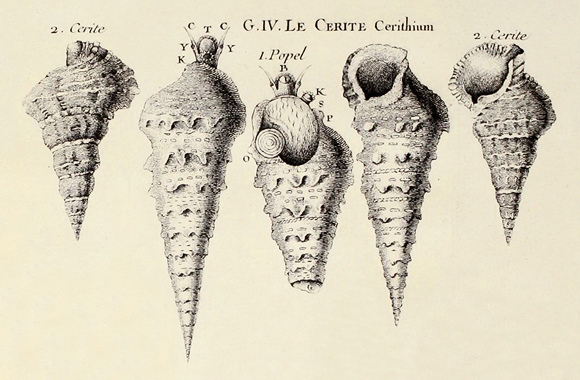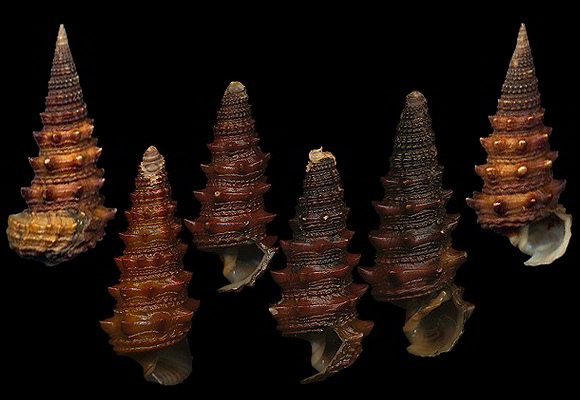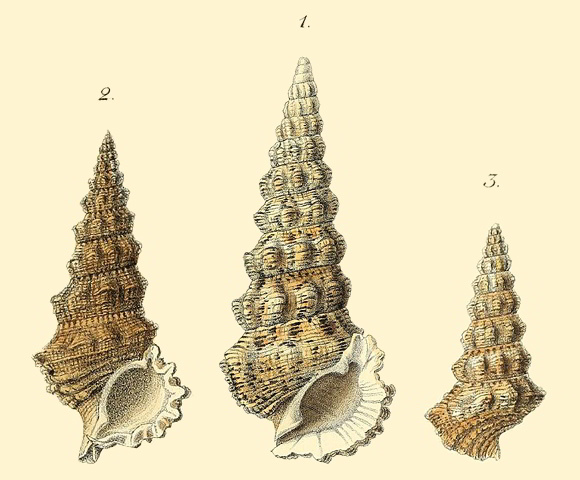Bruguière, 1792

Red Sea to NE. Africa, Arabia. Lives in shallow water on coral and rocky bottom, seagrass and in mangrove. Basionym: Cerithium adansonii. This is the erythaeonense of Lamarck. Sometimes registered as a subspecies of nodulosum, sometimes as a separate species.
This specimen was said to have been fished « at 2-3m deep, Haifa, NW. Israel ». 65mm, 1999. Mediterranean records are scarce, « and always concern dead specimens » (H. Mienis).
This specimen was said to have been fished « at 2-3m deep, Haifa, NW. Israel ». 65mm, 1999. Mediterranean records are scarce, « and always concern dead specimens » (H. Mienis).

Bruguière: « Its aperture is fully analogous to the one [of nodulosum], insomuch that [this shell] seems to be only a diminution; it is only slightly shorter and a little more broader in the middle. The colour is white, unblended in the young, and thinly stained and dotted with brown in the adults. Lastly, this shell differs from the other species [nodulosum] only by the smaller size, the spiral striae that are not coupled, and by the conical shape of the knobs. » – J. G. Bruguière: Histoire naturelle des vers vol. I, Paris 1792, via BHL.
The continuation of the text, which involves Adanson’s recall, leaves a strange impression: does this shell really come from eastern Africa? Could it be possible Adanson had described, for example, a Tympanotonus? This author worked on species from west Africa, Gambia, Sénégal, and certainly not Red Sea, where lives adansonii.
In fact, Bruguière combines some informations related to Adanson’s “Popel” (plate X fig.1 and p.154 – « very common in all the muddy rivers where the salt water flows up, especially at the northern extremity of Sénégal island ») with informations that regard the “Cérite” (plate X fig.2 and p.155 – « only two inches in length, the half in width […] This species also lives in the mud; but it is only met in small number in the river Gambie »).
The continuation of the text, which involves Adanson’s recall, leaves a strange impression: does this shell really come from eastern Africa? Could it be possible Adanson had described, for example, a Tympanotonus? This author worked on species from west Africa, Gambia, Sénégal, and certainly not Red Sea, where lives adansonii.
In fact, Bruguière combines some informations related to Adanson’s “Popel” (plate X fig.1 and p.154 – « very common in all the muddy rivers where the salt water flows up, especially at the northern extremity of Sénégal island ») with informations that regard the “Cérite” (plate X fig.2 and p.155 – « only two inches in length, the half in width […] This species also lives in the mud; but it is only met in small number in the river Gambie »).

